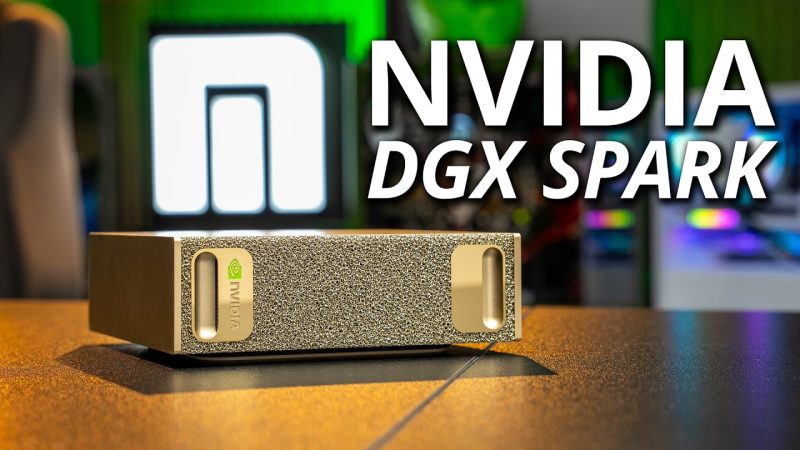The Next Step in Personal AI Computing
NVIDIA has introduced the DGX Spark, a compact AI supercomputer designed to deliver data center–level performance from the comfort of your desk. Powered by the Grace Blackwell architecture, the DGX Spark offers an astonishing 1 petaflop of computing power—equivalent to one quadrillion operations per second—while fitting into a sleek 150 × 150 × 50 mm chassis weighing around 1.2 kilograms.
The system, once known as Project DIGITS, combines NVIDIA’s entire AI stack—including GPUs, CPUs, high-speed interconnects, and specialized AI software—into one small, energy-efficient device. At its heart lies the GB10 Grace Blackwell Superchip, which merges CPU and GPU capabilities through a unified memory design.
What Makes DGX Spark Stand Out
With 128 GB of shared system memory, the DGX Spark can locally fine-tune or run inference on models up to 200 billion parameters. For larger workloads, multiple units can be linked using NVLink-C2C and ConnectX-7 networking, allowing collaboration across systems to handle models approaching 405 billion parameters.
Key features include:
- 1 petaflop AI compute performance
- 128 GB unified system memory
- Grace Blackwell GB10 Superchip
- NVLink-C2C and ConnectX-7 for multi-unit scaling
- Compact 1.2 kg form factor
The DGX Spark is priced at $3,999—higher than the initial $3,000 teaser—but still relatively accessible compared to full-scale data center setups. Major OEM partners such as Dell, HP, ASUS, Lenovo, and MSI are now offering customized Spark-based systems or taking preorders.
Democratizing AI Development
NVIDIA’s latest innovation signals a move toward making high-performance AI computing accessible to smaller teams, startups, and research labs. By providing a workstation-level device capable of serious AI workloads, DGX Spark reduces reliance on expensive cloud resources or large-scale on-premise clusters.
However, not everyone is convinced the price jump is worth it. Critics argue that tech-savvy users could achieve comparable performance by building custom GPU rigs or renting cloud GPUs as needed. Still, the appeal of having supercomputer-grade AI hardware in a portable form factor could be a game-changer for researchers and developers.
NVIDIA is also preparing to launch the DGX Station, a more powerful sibling capable of scaling to tens of petaflops with expanded memory—ideal for intensive model training. Together, these systems position NVIDIA at the forefront of localized AI computing, bridging the gap between cloud-scale performance and desktop convenience.
As AI models continue to expand and edge computing grows more critical, the DGX Spark may redefine how developers innovate—bringing unprecedented speed and capability directly to their desks.
